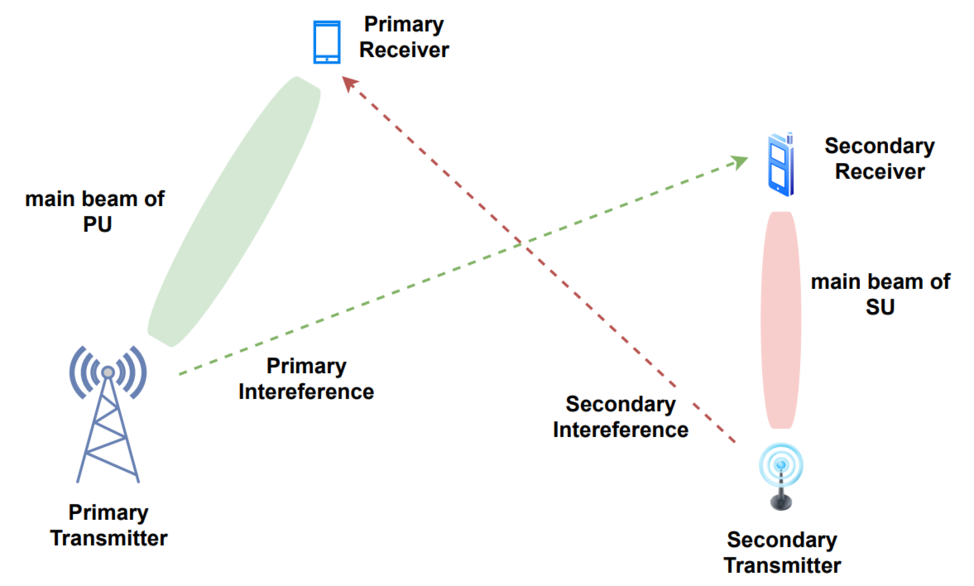Navigating the spectrum: Unveiling cognitive radio module for wideband signal
Overview
The rapid growth and development in mobile communication technologies will drive all networks to achieve higher data rates, and seamless connectivity, handle new and multiple data traffic, and support new types of data services. However, there will be a scarcity in spectrum allocation to support various services and mobile users. The major issue is that nearly 70% of available unlicensed spectrums are not effectively utilized by users, resulting in spectrum resource wastage. To overcome spectrum resource wastage, Cognitive Radio (CR) techniques have emerged, enabling secondary and effective utilization of these spectrum resources. It is crucial to sense/monitor wideband radio signals using an effective module for optimal utilization.
Need for Cognitive Radio Techniques
The traditional spectrum sensing methods are unable to meet the current requirements of users and their applications. Some of these traditional methods use Analog-to-Digital Converters (ADC), which fail to satisfy the Nyquist Sampling rate, leading to high power consumption and a relatively increased hardware cost for mobile terminals. These ADCs also possess significant hardware and computational complexity in data storage during the transmission and reception of signals. Wideband spectrum sensing methods are widely classified into two types. They are Nyquist sampling theorem-based wideband sensing and Sub-Nyquist sampling theorem-based wideband sensing. The idea behind Nyquist wideband sensing is to divide the wide spectrum into multiple sub-bands sequentially. Unfortunately, the scanning performance will not be sufficient for new data services, but it will also lead to higher energy consumption at the both base stations and mobile terminals side and higher computational complexity.
SDR for Signal Detection
We need an appropriate instrument for monitoring and testing the white spaces and their effective utilization. This whitespace spectrum will be allocated to the secondary user when the channel is busy, and high data traffic is experienced. Such instruments need to be highly capable of observing the wideband of signals in the entire spectrum, detecting unused white spaces, signal separation for allocation, suggesting modulation techniques to avoid interferences, and finally measuring the parameters of each signal at physical layers. Cognitive Radio (CR) with built-in Software Defined Radio (SDRs) is widely used for signal acquisition, processing, and transmission depending on the applications. SDRs are also used for implementing the frequency Up/Down Conversion functions required for signal transmission and reception. The typical 4×4 MIMO SDR Lekha Waveguru kit at the channel bandwidth of 200 KHz and 56 MHz is available in our institute
RF Measuring Instruments
The RF measuring instruments are required to find the characteristics of the signals from the spectrum observed by the device. These instruments extract signal information not only in the frequency domain but also need to obtain information in the time and code domains. After that, the observed band of signals is analysed, separated, and processed in different domains. This process is followed by white space signal detection based on its power density and bandwidth variations. Such sensing will provide high-frequency resolution and high accuracy for power density. High-frequency resolution is a parameter to detect narrowband signals even though the spectrum is wide.
Sensing Methods
Spectrum sensing is the most crucial block in communication equipment because it is responsible for finding the occupancy information of certain bands or single frequencies. This spectrum sensing always requires a high-speed ADC and digital signal processing hardware. These measurement instruments are required to identify the spectral position of the sensed signals in the observed band. These sensing methods are classified into two different types, namely Wideband and Narrowband spectrum sensing methods.
Wideband Sensing
To sense multiple sub-bands in a parallel manner, wideband spectrum sensing methods have evolved. This method scans one sub-band at a time and uses an effective eigenvalue decomposition method in each sub-band. It requires various radio frequency components as chains for signal processing. Due to these frequency components, the RF chains will possess large latency at the receiver side. We need high-speed digital signal processing circuitry for operating over multiple frequency bands. Some of these approaches are discussed in this section. The first approach is wideband detection based on the width of each sub-band, known to the SDR. The second approach is based on estimating the boundaries and the PSD level of each sub-band jointly. This method helps minimize the distance between the PSD level of the signals in the unlicensed band. This estimation is done by comparing it with the threshold values of signal PSDs with other bands in the spectrum. The next approach is spectrum segmentation, which is sensed based on finding the boundaries of the sub-bands of the signals in the spectrum. The last approach is compressive sensing, which is used to reduce the effects and the need for data conversion at high speed and effective signal processing.
Conclusion
Although engineers and researchers have made abundant efforts to develop various wideband spectrum sensing signal processing methods and algorithms, still, a few implementations and test beds demonstrated do not meet the actual applicability. This article aims to kindle the interest of technocrats and readers to strengthen and enlighten their work further towards Beyond 5G spectrum sensing.
Source
- https://www.bitsathy.ac.in/blog/wideband-radio-monitoring-module/
- https://www.rohde-schwarz.com/in/products/test-and-measurement/essentials-test-equipment/spectrum-analyzers/rf-test-and-measurement-equipment_256004.html
- https://www.wipro.com/engineering/cognitive-radio/#:~:text=Some%20of%20the%20existing%20techniques,space%20created%20in%20real%2Dtime.

